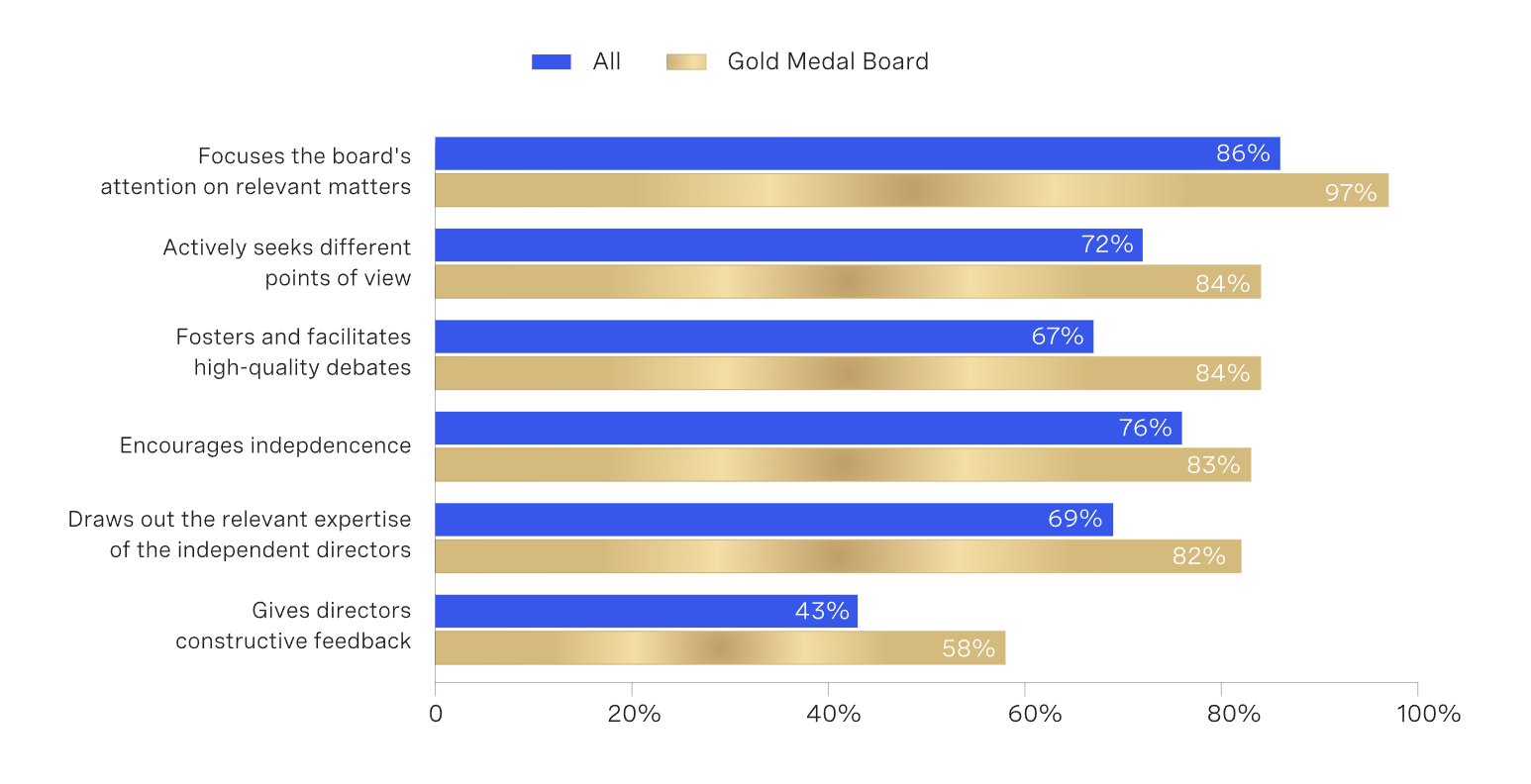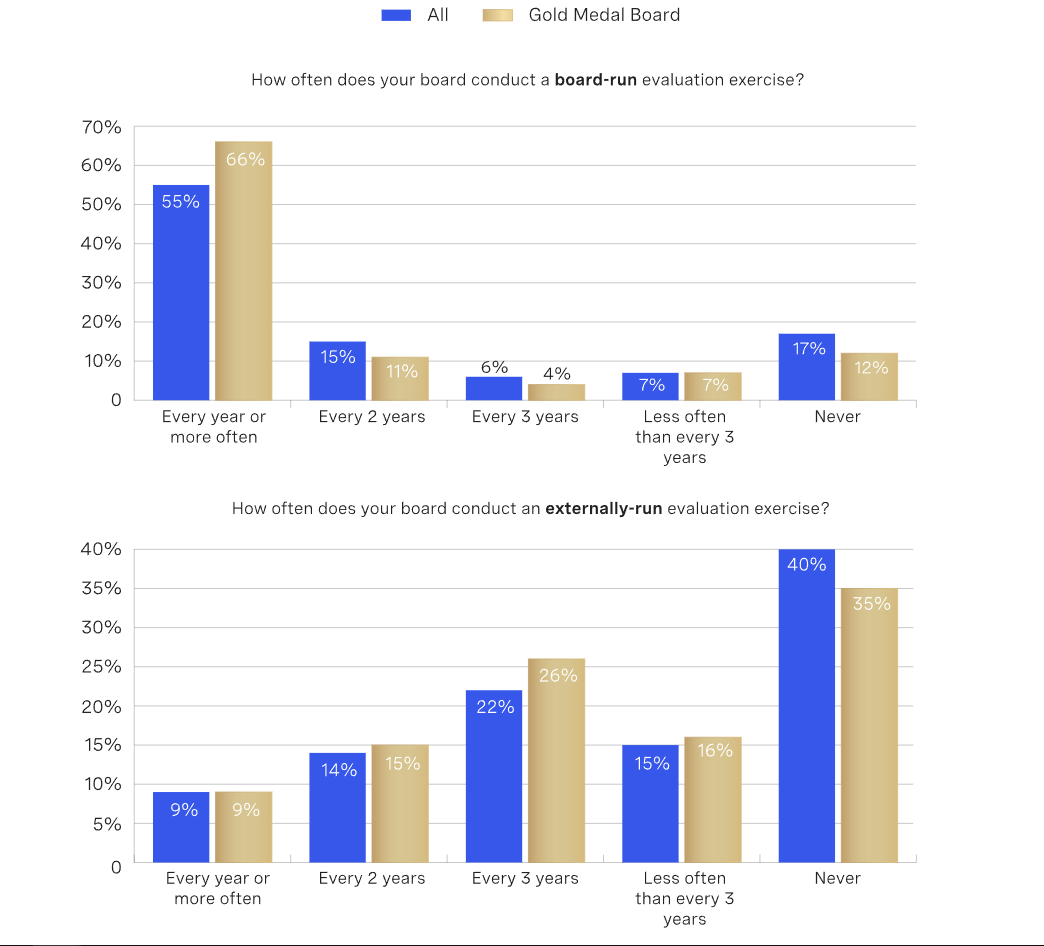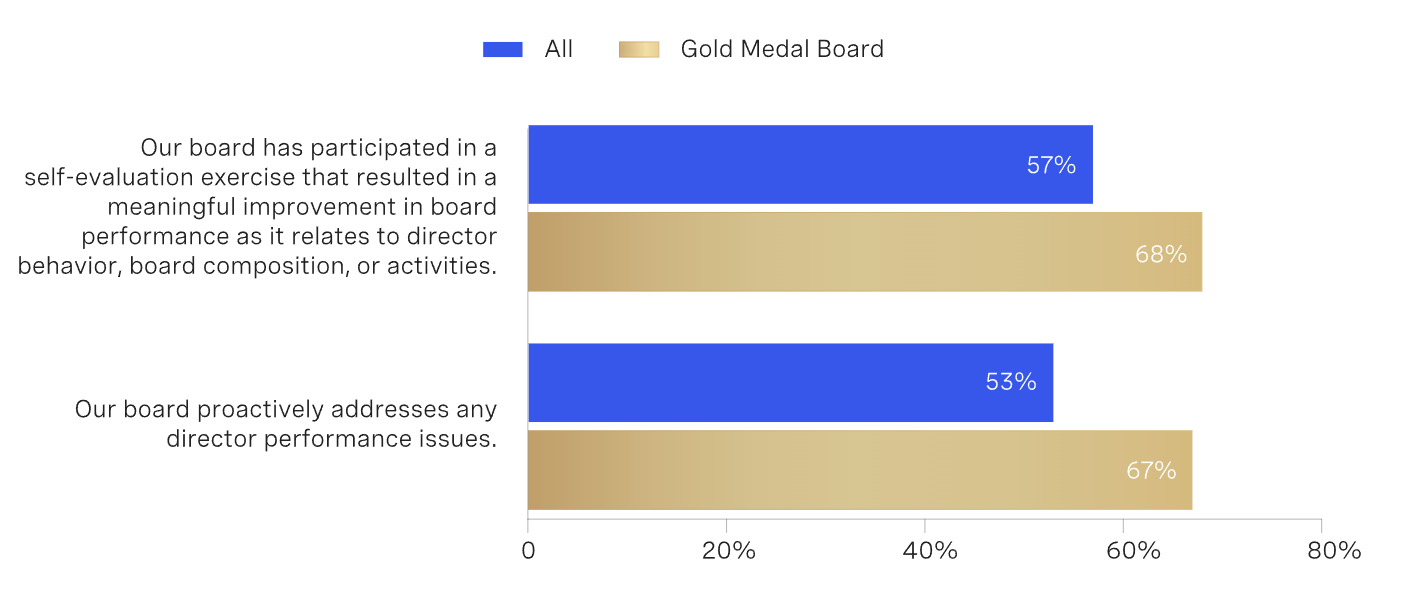Rusty O’Kelley co-leads the Board and CEO Advisory Partners in the Americas, Rich Fields leads the Board Effectiveness practice, and Laura Sanderson co-leads the Board and CEO Advisory Partners in Europe at Russell Reynolds Associates. This post is based on a Russell Reynolds memorandum by Mr. O’Kelley, Mr. Fields, Ms. Sanderson, PJ Neal, Jemi Crookes, and Elena Loridas.
While all directors can contribute to the board’s success, the board chair has a unique set of responsibilities, both in the tone that they set, and their influence on how time and resources are deployed. The best board chairs are facilitators who get the best out of the collective expertise of the board—yet many chairs fail to play that role successfully. Year over year, we are constantly amazed at the sizable gap between observed chair behaviors on typical boards and those on Gold Medal Boards (boards whose directors rate their board effectiveness as a 9 or 10 on a 1-10 scale, and report the company as having outperformed relevant TSR benchmarks for two or more consecutive years), as shown below:
Source: Russell Reynolds Associates’ 2022 Global Board Culture and Director Behaviors Survey. Percentage of directors saying they “always” or “often” observed their board chair demonstrating the specific behavior. N=678. 2022.
On every single measure, Gold Medal Board directors report seeing their chair outperform the chairs of typical boards: They are more likely to foster and facilitate high-quality debates (17 percentage points higher), give directors constructive feedback (+15pp), draw out the relevant expertise of the independent directors (+13pp), actively seek out different points of view (+12pp), focus the board’s attention on relevant matters (+11pp), and encourage independence (+7pp). What this data reveals is that being a great board chair is hard work, requiring active, constructive leadership and working hard to get the best ideas and input out of the board.
The ability of the board chair to give constructive feedback is enabled by the frequency in which boards go through formal evaluation exercises (self-run or externally run). It is therefore no surprise that Gold Medal Board chairs are more likely to give directors constructive feedback: They are more likely to run evaluation exercises, and to do so with increased frequency than typical boards.
Source: Russell Reynolds Associates’ 2022 Global Board Culture and Director Behaviors Survey. Percentage of directors saying yes to the statements. N=1,001. 2022.
And without a doubt, Gold Medal Boards benefit from this work:
Source: Russell Reynolds Associates’ 2022 Global Board Culture and Director Behaviors Survey. Percentage of directors saying yes to the statements. N=975. 2022.
While this effort takes work and time, it ensures the board has the right skills, experience and focus to address critical questions.
From Insights to Action
To move boards from good to great and drive high performance, board leaders should consider multiple performance-focused activities including:
- Hire with success in mind: The easiest way to build a high-performing boardroom is to start with high-performing directors. When recruiting directors, board leaders should have a clear view on the behaviors and attributes that matter most—not simply the resume bullets they want to see—and ensure that they are recruiting directors who act the right way, and who will ensure the board performs as it should.
- Commit to performance: It is impossible for board leaders to improve the quality of their board if they do not have the data necessary to measure and assess performance. The best boards know this—that is why they are more likely to do assessment activities and give performance feedback to directors. Clear, concise, evidence-based performance data is the foundation for improving individual director—and ultimately, the full board’s—performance.
- Pick the right leaders: In an ideal boardroom, every director could step into a board leadership role if asked. Recruiting the right directors and giving them clear, data-driven feedback is one way to maintain this standard. So, too, is ensuring that boards only select leaders who personify these behaviors. If the board chair or committee chairs aren’t the clearest role models in the boardroom, it is unlikely that the rest of the board will behave as they should.
A great board is an intentional thing—the right people have been selected, they focus on the right topics, and they’re brought together by the right leaders (who hired them). While not easy, it is achievable in time with the right focus and effort.
Methodology
Over 1,100 supervisory board-level directors from more than 41 countries participated in the Russell Reynolds Associates’ 2022 Global Board Culture and Director Behaviors Survey, with 55 percent of respondents based in Europe, 27 percent in the Americas, 12 percent in Oceana, 3 percent in Asia, 2 percent in Africa, and 1 percent in the Middle East. Industries represented included financial services (26 percent of respondents), industrial and natural resources (22 percent), consumer (11 percent), technology (11 percent), healthcare (10 percent), and professional and business services (6 percent). Forty-four percent of respondents’ companies had annual revenue over $1 billion.
 Print
Print

